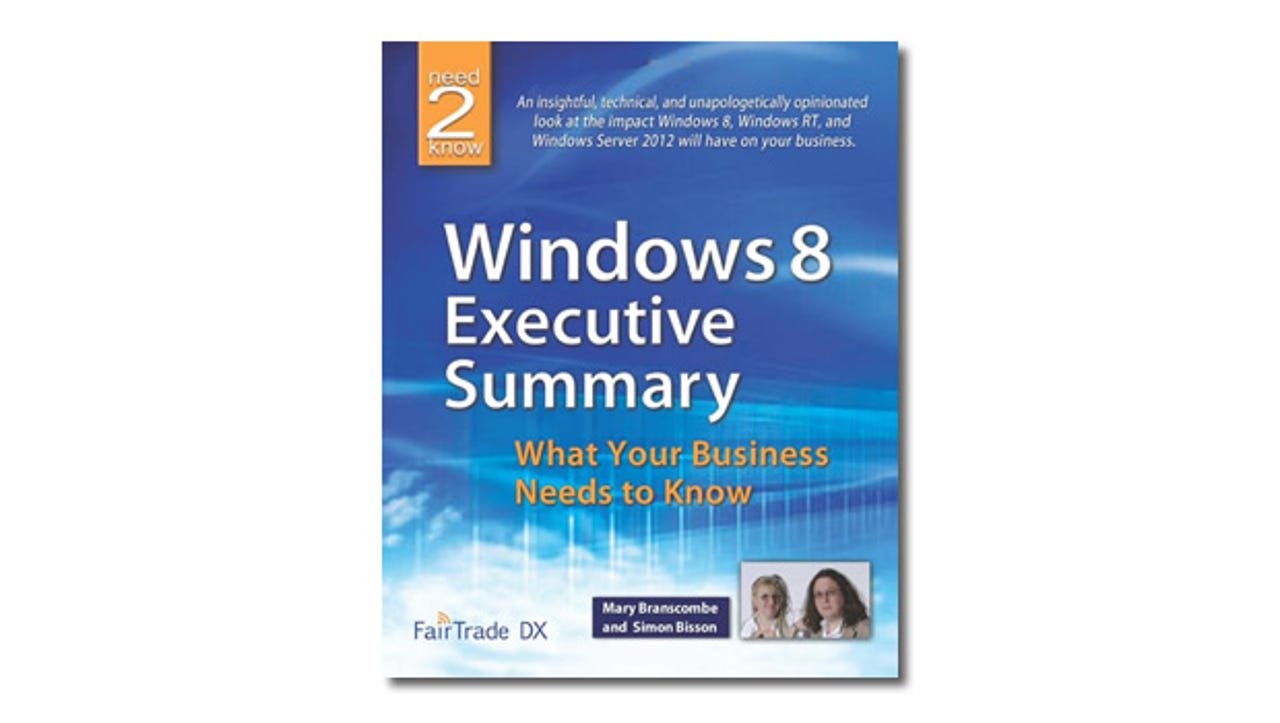Windows 8 Executive Summary: Book review

One day a technology historian will write a doctoral dissertation on the changes in computing paradigm in the late 20th and early 21st centuries through the medium of Microsoft Windows. There was the desktop metaphor, which persisted through XP. Then there was the search metaphor, which dominated Windows 7. Now everything has to look like a tablet — or perhaps a child's toy, where you push a big, brightly coloured button and Something (Exciting) Happens.
But what a business needs to know is not so much what Microsoft was thinking as what challenges and opportunities the new operating system will present. For the huge number of businesses that have stuck with Windows XP (recent figures show it neck-and-neck with Windows 7 at around 38 percent), this is a particularly important question. Support for XP ends in 2014: do you go for the known quantity of Windows 7, or jump an entire generation and head for the less-certain hills of Windows 8?
This is the question that long-serving technology journalists (and ZDNet bloggers) Mary Branscombe and Simon Bisson set out to answer in the interests of helping businesses make informed decisions.

As they say up front, Windows 8 Executive Summary is neither a replacement manual nor a lengthy review: instead, it's a guide to what Microsoft's new OS will and won't do for a business, written by people who've already spent more than 1,500 hours with the software.
The first point: if you were hoping that, despite its different look, Windows 8 isn't really much of a change, forget it. But, the authors argue, that's not necessarily a bad thing. If you do it right, your approach to IT infrastructure should undergo a transformation that helps your business innovate rather than simply solving problems in a piecemeal manner. Standardise, automate and consolidate.
To be fair, a lot of this material is not necessarily specifically about Windows 8. Whenever a major change in operating system comes along, it's an opportunity to implement a change of approach to IT. What Branscombe and Bisson are trying to get across, however, are the ways in which computing will change in the coming decade, for which Windows 8 is designed. Touchscreens will dominate, for example, as will mobile phones. One consequence is that it's no longer feasible to ban personal devices: data can't be protected by keeping it securely within a perimeter — instead, it must be protected wherever it happens to be, on whatever device.
By the end of this book, you may not like Windows 8 as much as Branscombe and Bisson seem to. But at least you'll be clear whether it's the devil you're going to need to know in the coming years.
Windows 8 Executive Summary: What Your Business Needs to Know
By Mary Branscombe and Simon Bisson
FairTrade DX
184pp
ISBN: 978-1-9384250-3-5
£13.59 (paperback) / £6.62 (Kindle edition)